Expertise Provided by Mark Robertson
Manufacturing is the backbone of the economy. It's the process of turning raw materials into finished goods. It's responsible for a large part of the world's GDP. Manufacturing stocks can be a great investment. They are for those looking for long-term growth and income.
Benefit of Investing Manufacturing Stock
1. Economic Stability:
Manufacturing is a foundational sector of the economy. It provides stability even during economic downturns. Manufacturing companies have a reliable revenue stream due to the consistent demand for goods.
2. Global Growth Opportunities:
When countries around the world grow, it's good for manufacturing. As they get bigger, more people want to buy things that are made. This gives companies a chance to sell their products in different countries.
3. Diversification:
The manufacturing sector includes different types of industries. These include cars, electronics, and things people use every day. When you invest in these industries, it makes your investment mix more varied. It also helps to spread the risk.
4. Dividend Income:
Many manufacturing companies generate cash flows. This allows them to pay dividends to shareholders. The dividend payments provide investors with a reliable source of returns.
5. Job Creation:
The manufacturing sector generates employment opportunities. Factories and production facilities offer jobs. This contributes to growth and overall prosperity.
6. Infrastructure Development:
Investing in these projects creates a need for materials to build. It also creates a need for products that manufacturers make.
7. Consumer Spending Impact:
The performance of manufacturing stocks is influenced by consumer spending patterns. When people have income, they tend to buy durable goods. This has a positive effect on companies in the manufacturing sector.
 Source: Wishfin
Source: Wishfin
9. Long-Term Growth Potential:
Manufacturing stocks have the potential for growth in the long run. Companies that adapt to market changes innovate and meet consumer demands. They can create value for their shareholders.
Positive Effects of the Manufacturing Industry
1. Job Creation:
Manufacturing plays a role in employment by providing jobs across fields. The industry contributes to reducing unemployment rates. It also promotes stability. It does this by providing labor in production facilities. It also provides labor in supporting roles in research, development, and management.
2. Economic Growth and GDP Contribution:
The manufacturing sector makes a contribution to a nations domestic product (GDP). Goods are produced and economic value is generated through manufacturing. it also contribute to growth and prosperity.
3. Supply Chain Stimulus:
The manufacturing sector has an impact on related industries. It stimulates its supply chain. This includes benefiting raw material suppliers. It also benefits logistics and transportation services. It also benefits other supporting industries. They thrive due to the increased demand from manufacturing activities.
4. Infrastructure Development:
Manufacturing projects usually need infrastructure development. This can include constructing factories. It can mean establishing transportation networks. It can mean providing utility services. The need for infrastructure contributes to growth. It also leads to job creation in interconnected sectors.
5. Skills Development and Training:
Manufacturing jobs often require skills. This causes the industry to promote programs for improving skills and training. This does not address the needs of the manufacturing workforce. It also enhances the entire labor market's skill set.
6. Diverse Product Range:
The manufacturing industry offers a variety of products. These products cater to the needs of consumers and businesses alike. This industry significantly improves quality of life. It supports sectors. The goods range from food and clothing to cutting-edge technologies.
7. Regional Development:
The growth of regions is often driven by manufacturing activities. These regions become centers of activity. They attract businesses. They create job opportunities. They contribute to the development the communities.
Good Return on Investment in Manufacturing
Determining what counts as a "return on investment (ROI) in manufacturing depends on factors. These factors include:
Investment Goal:
Do you aim for regular income or long-term growth? Investors seeking income might consider dividend yields of 5 7% as good. Growth-oriented investors may find an annual return of 8-12% desirable. They may also seek to outperform market indices.
Risk Tolerance:
Are you comfortable with the ups and downs of manufacturing stocks? If you have a tolerance for risk, you might pursue potential returns.
Industry Trends:
The return of manufacturing investment depends on industry trend. Certain industries have growth potential. This is in contrast to more traditional sectors, like textiles or basic materials.
Investment Duration:
When it comes to investment duration, long-term strategies aim for higher returns. Short-term approaches may prioritize riskier profit opportunities.
Historical Performance:
Historical performance can show the performance of the comoany. One way to evaluate a company's ROI is by comparing it to its performance and industry benchmarks.
Taking these factors into consideration lets discuss the outlook;
- The average annual ROI in manufacturing is around 10%. It can vary depending on circumstances.
- A yield of 5-7% is generally considered desirable in the manufacturing industry. This is a good return on investment (ROI).
- They may aim for returns that exceed the market average, such as S&P 500, or industry benchmarks. These returns often range between 8-12% or higher.
 Source: Investopedia
Source: Investopedia
Cons of Manufacturing Stocks
When investing in manufacturing stocks, be aware of the downsides. Consider them before adding to your portfolio. Here are a few key disadvantages to consider;
1. Volatility:
Manufacturing stocks tend to be more volatile. Technology and healthcare sectors are less volatile. The industry experiences patterns. It goes through periods of both prosperity and decline.
2. Competition:
Since manufacturing industry is competitive. Companies can find it tough to maintain their market position and profits. This is especially true when they face competition from nations with low labor costs. Mergers and acquisitions have the potential to disrupt the industry. They can also influence the performance of stocks.
3. Regulation:
Regulation plays a role in the manufacturing industry. Companies need to follow environmental, safety, and labor laws. These regulations can increase business costs.
4. Technological Disruption:
Automation and AI can improve efficiency. They can also boost productivity. But, they may also result in job losses. We need companies to invest in retraining. They also need to invest in adaptation.
5. Global Economic Dependence:
Manufacturing companies depend on supply chains. They also rely on international trade. This exposes them to risks such as instability, trade wars, or economic turmoil in other countries.
6. Environmental Impact:
Manufacturing processes contribute to pollution. They also contribute to resource depletion. This can lead to publicity. It can also lead to regulatory fines. It can also cause reputational damage or stock price fluctuations.
7. Long Investment Horizon:
Investing in the manufacturing sector requires a long-term perspective. This is due to the need for infrastructure and technology investments. This longer investment horizon may slow returns compared to other industries. As such it is more suitable for long term investors who have a tolerance, for risk.
Determining the time to invest in the sector is not a one size fits all situation. It depends on factors. These include your investment goals, risk tolerance, and personal financial circumstances. However, I can provide you with some guidelines and considerations:
1. Market Conditions:
- Economic recovery: Look for indications of recovery. Increased GDP and consumer confidence often lead to higher demand for manufactured goods.
- Interest rates: Keep an eye on interest rate trends. Rising rates can negatively impact the costs for manufacturing businesses. They can also raise borrowing expenses, which could affect stock prices. Conversely falling rates can relieve burdens and improve a company’s outlook.
- Sector performance: Compare the sectors performance with sectors in the market. If it outperforms others consistently it might indicate potential for growth. On the hand if it underperforms a cautious approach may be warranted.
2. Company Fundamentals:
- Financial health: Assess the health of specific companies that interest you. Consider factors such as profitability, debt levels and cash flow.
- Management team: Evaluate the track record and future vision of the management team. A competent leadership, with growth strategies can be indicators.
- Competitive advantage: Determine what distinguishes the company from its rivals. Having technology, intellectual property or a established brand can contribute to future prosperity.
3. Personal Considerations:
- Investment goals: Timing of investment depends on the choice of investment goals and long-term growth.
- Risk tolerance: How comfortable, with the ups and downs of the sector? Be aware of fluctuations. Only invest funds that can afford to lose.
- Diversification: Take into account the overall balance of investment portfolio. Investing in the sector should complement existing holdings without exposing to risk.
 Source: Inside with Impact
Source: Inside with Impact
Conclusion
In conclusion, investing money in manufacturing stocks is a smart move. It gives a mix of stability, chances to grow globally, and the benefits of spreading investments. The manufacturing sector is like a strong foundation. It helps investments stay steady, even when the economy is not doing well. Spread your investments across different parts of the manufacturing industry. Think about earning money through dividends and advancements in technology. This makes this investment choice even more attractive. However, it's crucial for investors to know that this sector can be unpredictable. It also faces challenges. It relies on how well the world's economy is doing. To figure out how much money one might get back from their investment, he needs to think about his own goals. He also needs to consider how much risk he is comfortable with. When to invest depends on looking at certain signs, what the market is like, and what makes sense for him. Making smart choices based on good information is key to taking advantage of the industry's ability to keep growing. It also helps to contribute to making progress in the economy and new innovations.
Read more about Industrial Stocks in our ongoing sector series:
The Top Industrial Stocks
Are Industrials a Good Investment?
The Best Industrial ETFs
How do you Evaluate Industrial Stocks?
What is the Manufacturing Sector
Industrial Stocks with Dividends
Why Invest in Manufacturing Stocks
Important Manufacturing Sector Ratios
Why are Industrial Stocks Doing Well
What Affects the Industrial Industry?


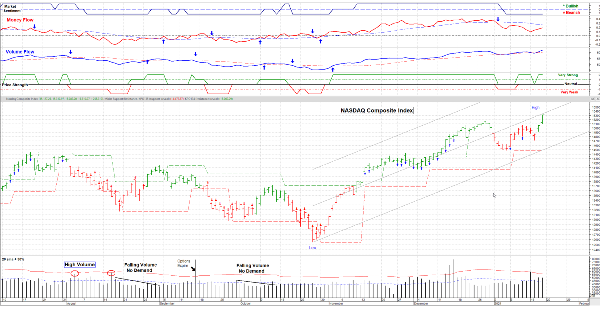



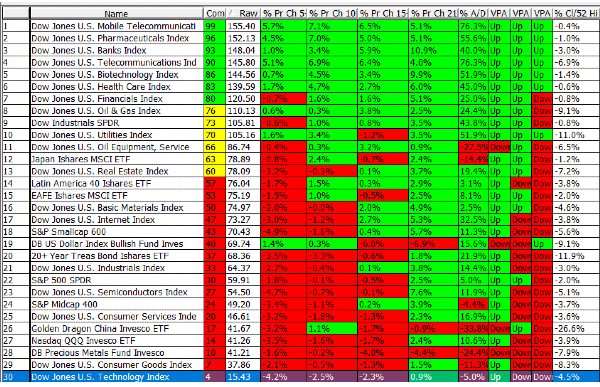
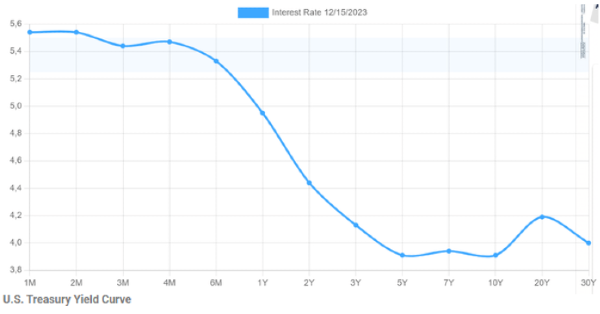
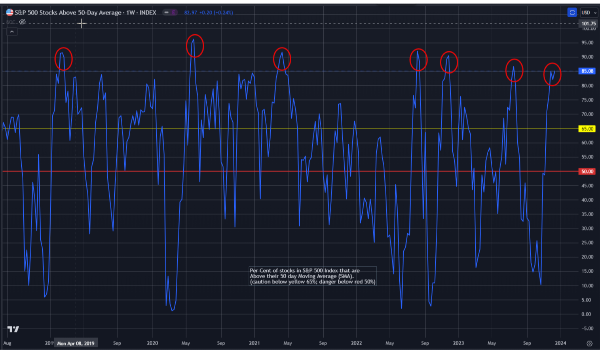


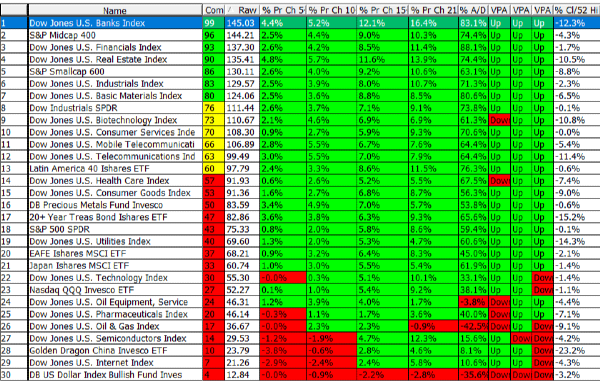
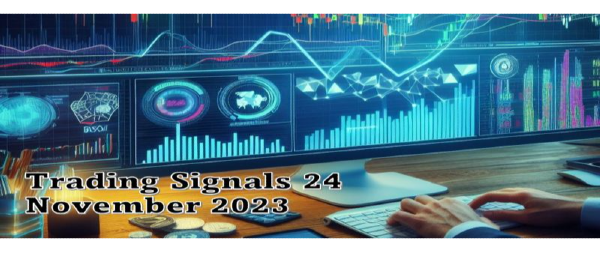
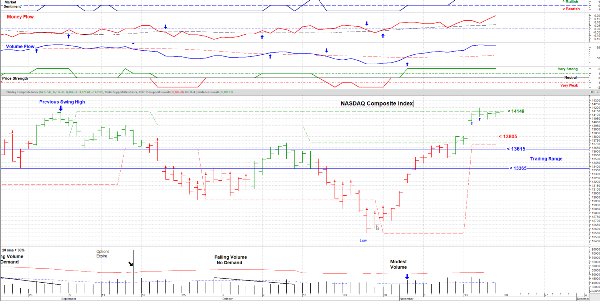



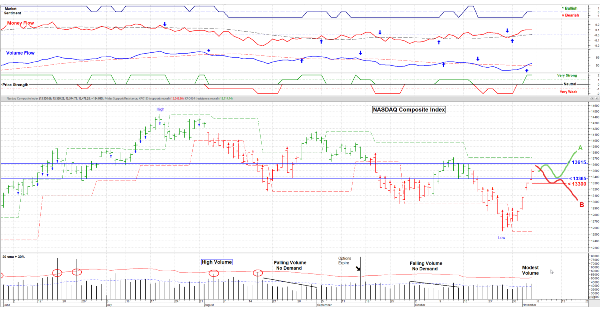












Expertise Provided by Mark Robertson
Manufacturing is the backbone of the economy. It's the process of turning raw materials into finished goods. It's responsible for a large part of the world's GDP. Manufacturing stocks can be a great investment. They are for those looking for long-term growth and income.
Benefit of Investing Manufacturing Stock
1. Economic Stability:
Manufacturing is a foundational sector of the economy. It provides stability even during economic downturns. Manufacturing companies have a reliable revenue stream due to the consistent demand for goods.
2. Global Growth Opportunities:
When countries around the world grow, it's good for manufacturing. As they get bigger, more people want to buy things that are made. This gives companies a chance to sell their products in different countries.
3. Diversification:
The manufacturing sector includes different types of industries. These include cars, electronics, and things people use every day. When you invest in these industries, it makes your investment mix more varied. It also helps to spread the risk.
4. Dividend Income:
Many manufacturing companies generate cash flows. This allows them to pay dividends to shareholders. The dividend payments provide investors with a reliable source of returns.
5. Job Creation:
The manufacturing sector generates employment opportunities. Factories and production facilities offer jobs. This contributes to growth and overall prosperity.
6. Infrastructure Development:
Investing in these projects creates a need for materials to build. It also creates a need for products that manufacturers make.
7. Consumer Spending Impact:
The performance of manufacturing stocks is influenced by consumer spending patterns. When people have income, they tend to buy durable goods. This has a positive effect on companies in the manufacturing sector. Source: Wishfin
Source: Wishfin
9. Long-Term Growth Potential:
Manufacturing stocks have the potential for growth in the long run. Companies that adapt to market changes innovate and meet consumer demands. They can create value for their shareholders.
Positive Effects of the Manufacturing Industry
1. Job Creation:
Manufacturing plays a role in employment by providing jobs across fields. The industry contributes to reducing unemployment rates. It also promotes stability. It does this by providing labor in production facilities. It also provides labor in supporting roles in research, development, and management.
2. Economic Growth and GDP Contribution:
The manufacturing sector makes a contribution to a nations domestic product (GDP). Goods are produced and economic value is generated through manufacturing. it also contribute to growth and prosperity.
3. Supply Chain Stimulus:
The manufacturing sector has an impact on related industries. It stimulates its supply chain. This includes benefiting raw material suppliers. It also benefits logistics and transportation services. It also benefits other supporting industries. They thrive due to the increased demand from manufacturing activities.
4. Infrastructure Development:
Manufacturing projects usually need infrastructure development. This can include constructing factories. It can mean establishing transportation networks. It can mean providing utility services. The need for infrastructure contributes to growth. It also leads to job creation in interconnected sectors.
5. Skills Development and Training:
Manufacturing jobs often require skills. This causes the industry to promote programs for improving skills and training. This does not address the needs of the manufacturing workforce. It also enhances the entire labor market's skill set.
6. Diverse Product Range:
The manufacturing industry offers a variety of products. These products cater to the needs of consumers and businesses alike. This industry significantly improves quality of life. It supports sectors. The goods range from food and clothing to cutting-edge technologies.
7. Regional Development:
The growth of regions is often driven by manufacturing activities. These regions become centers of activity. They attract businesses. They create job opportunities. They contribute to the development the communities.
Good Return on Investment in Manufacturing
Determining what counts as a "return on investment (ROI) in manufacturing depends on factors. These factors include:
Investment Goal:
Do you aim for regular income or long-term growth? Investors seeking income might consider dividend yields of 5 7% as good. Growth-oriented investors may find an annual return of 8-12% desirable. They may also seek to outperform market indices.
Risk Tolerance:
Are you comfortable with the ups and downs of manufacturing stocks? If you have a tolerance for risk, you might pursue potential returns.
Industry Trends:
The return of manufacturing investment depends on industry trend. Certain industries have growth potential. This is in contrast to more traditional sectors, like textiles or basic materials.
Investment Duration:
When it comes to investment duration, long-term strategies aim for higher returns. Short-term approaches may prioritize riskier profit opportunities.
Historical Performance:
Historical performance can show the performance of the comoany. One way to evaluate a company's ROI is by comparing it to its performance and industry benchmarks. Taking these factors into consideration lets discuss the outlook;
Cons of Manufacturing Stocks
When investing in manufacturing stocks, be aware of the downsides. Consider them before adding to your portfolio. Here are a few key disadvantages to consider;
1. Volatility:
Manufacturing stocks tend to be more volatile. Technology and healthcare sectors are less volatile. The industry experiences patterns. It goes through periods of both prosperity and decline.
2. Competition:
Since manufacturing industry is competitive. Companies can find it tough to maintain their market position and profits. This is especially true when they face competition from nations with low labor costs. Mergers and acquisitions have the potential to disrupt the industry. They can also influence the performance of stocks.
3. Regulation:
Regulation plays a role in the manufacturing industry. Companies need to follow environmental, safety, and labor laws. These regulations can increase business costs.
4. Technological Disruption:
Automation and AI can improve efficiency. They can also boost productivity. But, they may also result in job losses. We need companies to invest in retraining. They also need to invest in adaptation.
5. Global Economic Dependence:
Manufacturing companies depend on supply chains. They also rely on international trade. This exposes them to risks such as instability, trade wars, or economic turmoil in other countries.
6. Environmental Impact:
Manufacturing processes contribute to pollution. They also contribute to resource depletion. This can lead to publicity. It can also lead to regulatory fines. It can also cause reputational damage or stock price fluctuations.
7. Long Investment Horizon:
Investing in the manufacturing sector requires a long-term perspective. This is due to the need for infrastructure and technology investments. This longer investment horizon may slow returns compared to other industries. As such it is more suitable for long term investors who have a tolerance, for risk.
When Should I Invest in the Industrial Sector?
Determining the time to invest in the sector is not a one size fits all situation. It depends on factors. These include your investment goals, risk tolerance, and personal financial circumstances. However, I can provide you with some guidelines and considerations:
1. Market Conditions:
2. Company Fundamentals:
3. Personal Considerations:
Conclusion
In conclusion, investing money in manufacturing stocks is a smart move. It gives a mix of stability, chances to grow globally, and the benefits of spreading investments. The manufacturing sector is like a strong foundation. It helps investments stay steady, even when the economy is not doing well. Spread your investments across different parts of the manufacturing industry. Think about earning money through dividends and advancements in technology. This makes this investment choice even more attractive. However, it's crucial for investors to know that this sector can be unpredictable. It also faces challenges. It relies on how well the world's economy is doing. To figure out how much money one might get back from their investment, he needs to think about his own goals. He also needs to consider how much risk he is comfortable with. When to invest depends on looking at certain signs, what the market is like, and what makes sense for him. Making smart choices based on good information is key to taking advantage of the industry's ability to keep growing. It also helps to contribute to making progress in the economy and new innovations.
Read more about Industrial Stocks in our ongoing sector series:
The Top Industrial Stocks
Are Industrials a Good Investment?
The Best Industrial ETFs
How do you Evaluate Industrial Stocks?
What is the Manufacturing Sector
Industrial Stocks with Dividends
Why Invest in Manufacturing Stocks
Important Manufacturing Sector Ratios
Why are Industrial Stocks Doing Well
What Affects the Industrial Industry?